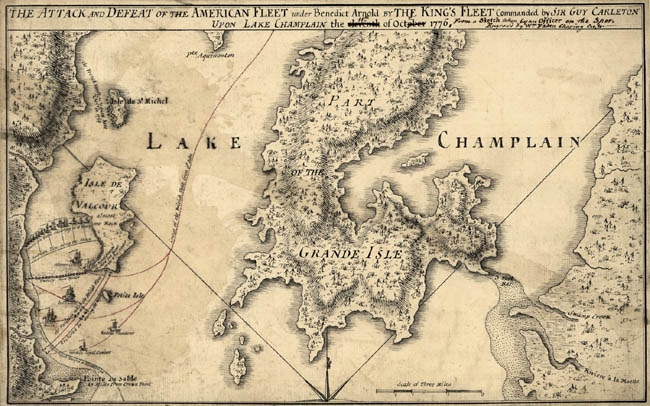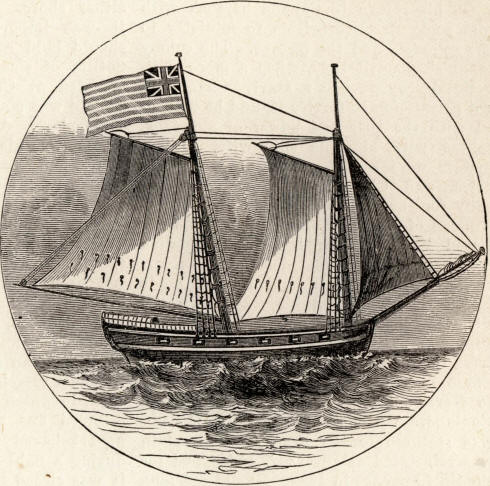Battle of Lake Champlain
|
|
This Site:
|
Original Map of the Battle of Lake Champlain Champlain, LAKE, OPERATIONS ON. After the Americans left Canada in sad plight in June, 1776, Carleton, the governor of Canada and general of the forces there, appeared at the foot of Lake Champlain with a well-appointed force of 13,000 men. Only on the bosom of the lake could they advance, for there was no road on either shore. To prevent this invasion, it was important that the Americans should hold command of its waters. A flotilla of small armed vessels was constructed at Crown Point, and Benedict Arnold was placed in command of them as commodore. A schooner called the Royal Savage was his flagship. Carleton, meanwhile, had used great diligence in fitting out an armed flotilla at St. John for the recovery of Crown Point and Ticonderoga. Towards the close of August, Arnold went down the lake with his fleet and watched the foe until early in October, when he fell back to Valcour Island and formed his flotilla for action without skill. Carleton advanced, with Edward Pringle as commodore, and, on the morning of October 11, gained an advantageous position near Arnold's vessels. A very severe battle ensued, in which the Royal Savage was first crippled and afterwards destroyed. Arnold behaved with the greatest bravery during a fight of four or five hours, until it was closed by the falling of night. In the darkness Arnold escaped with his vessels from surrounding dangers and pushed up the lake, but was overtaken on the 13th. One of the vessels, the Washington, was run on shore and burned, while Arnold, in the schooner Congress, with four gondolas, kept up a running fight for five hours, suffering great loss. When the Congress was almost a wreck, Arnold ran the vessels into a creek about 10 miles from Crown Point, on the eastern shore, and burned them. Then he and his little force made their way through the woods to a place opposite Crown Point, just avoiding an Indian ambush, and escaped to the port whence he started in safety. At Crown Point he found two schooners two galleys, one sloop, and one gondola—all that remained of his proud little fleet. In the two actions the Americans lost about ninety men; the British not half that number. General Carleton took possession of Crown Point on October 14, but abandoned it in twenty days and returned to Canada.
|
|
|
||
|
|
Site Copyright 2003-2018 Son of the South. For Questions or comments about this collection, contact: paul@sonofthesouth.net |
|
|
Are you Scared and Confused? Read My Snake Story, a story of hope and encouragement, to help you face your fears. |
||

